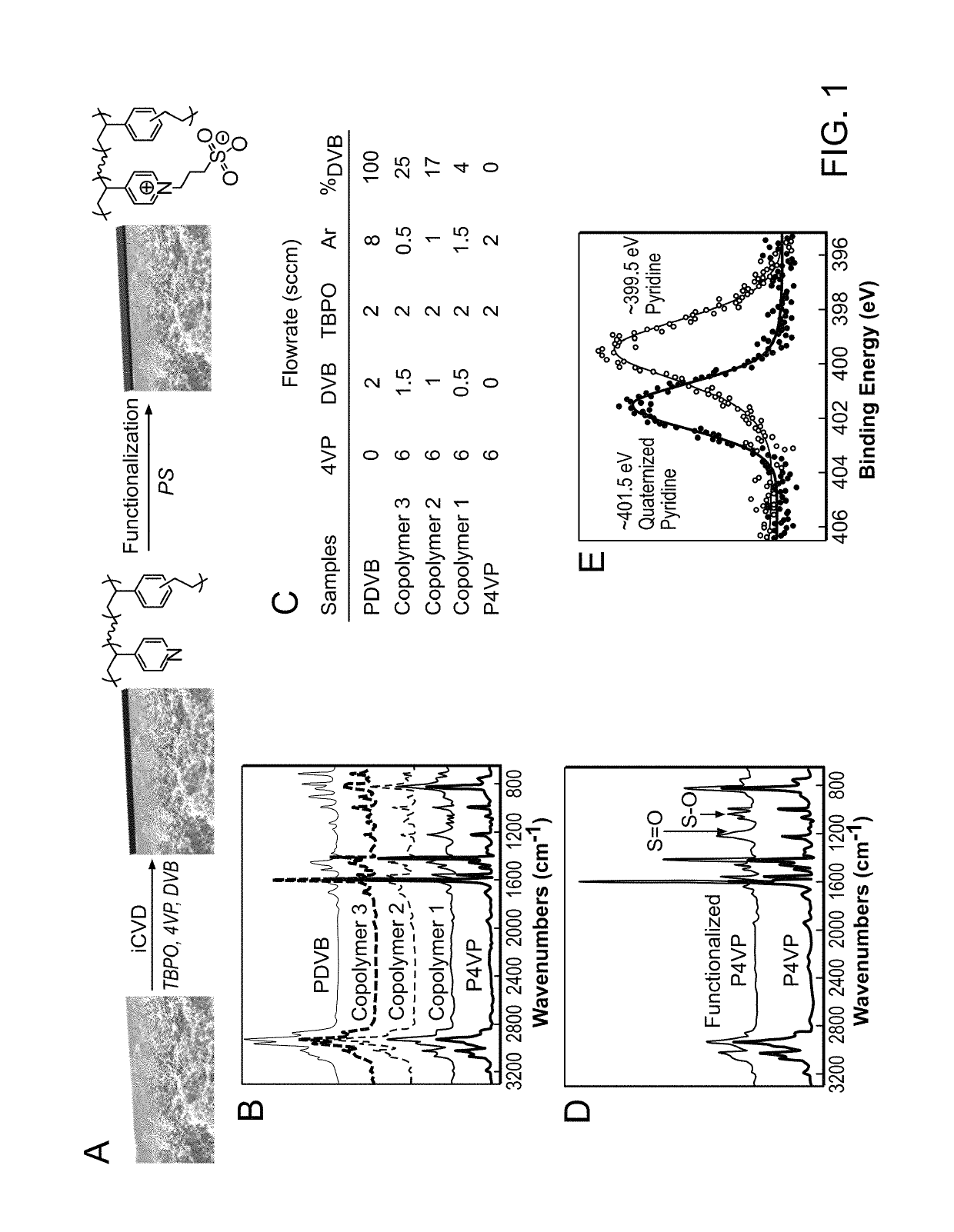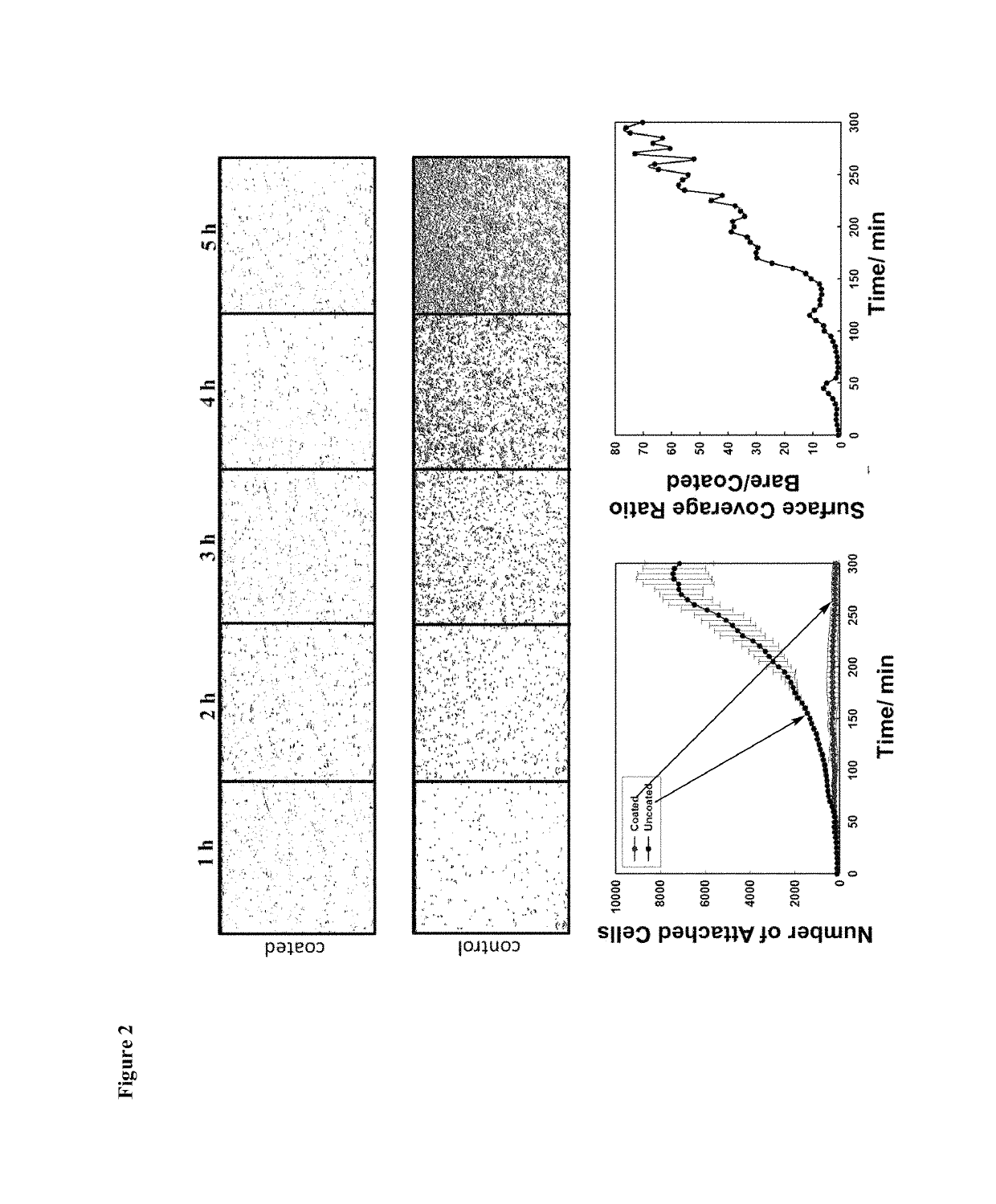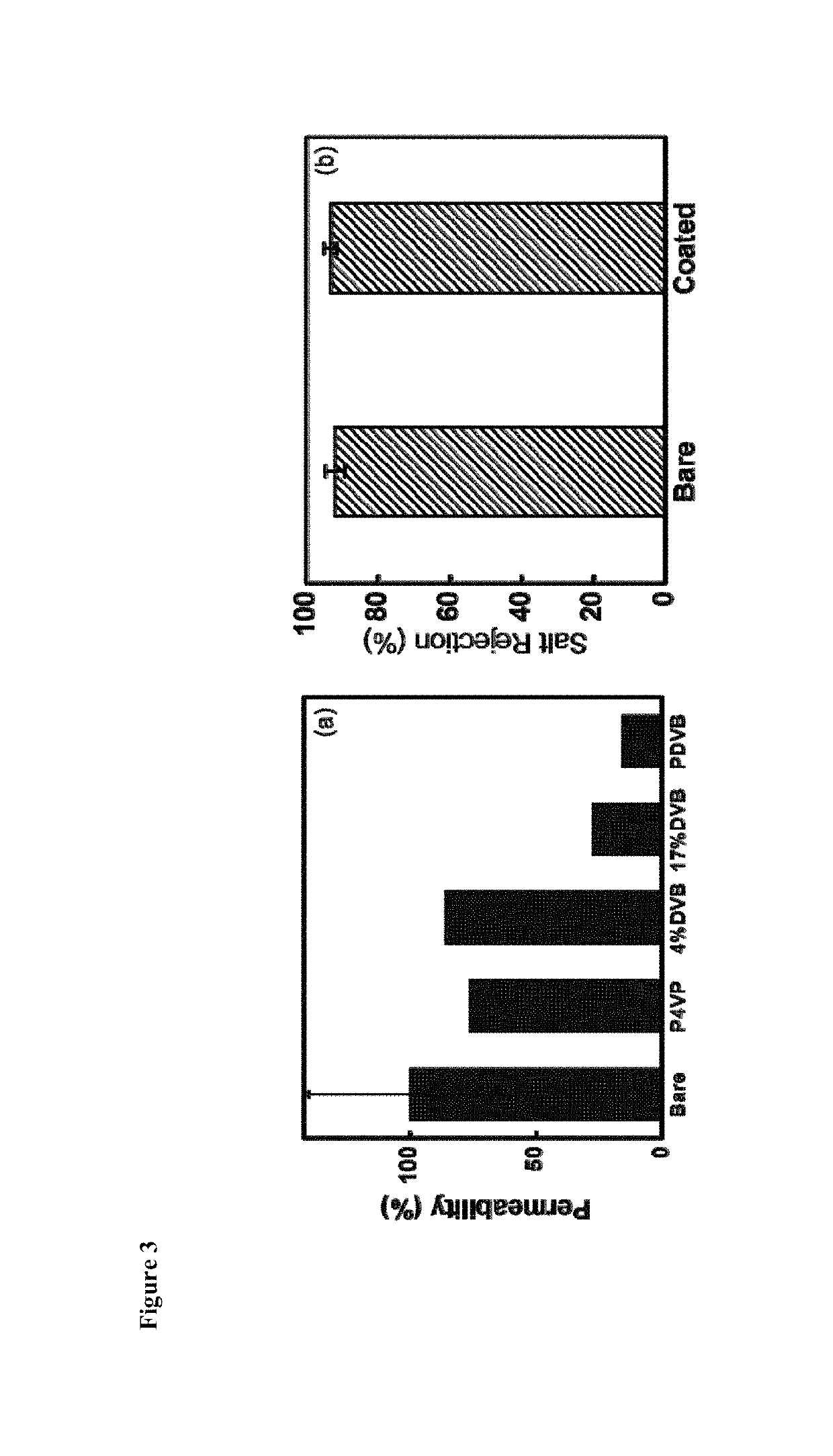Antifouling and chlorine-resistant ultrathin coatings on reverse osmosis membranes
a reverse osmosis membrane and ultrathin coating technology, applied in reverse osmosis, biocides, coatings, etc., can solve the problems of reducing the performance of devices involving these submerged surfaces, prone to fouling, and reducing the permeability and salt rejection ability
- Summary
- Abstract
- Description
- Claims
- Application Information
AI Technical Summary
Benefits of technology
Problems solved by technology
Method used
Image
Examples
example 1
aration and Derivatization
[0169]Methods All iCVD films were deposited in a custom built vacuum reactor (Sharon Vacuum), as previously described. Thermal excitations of the initiator were provided by heating a 0.5-mm Nickel / Chromium filament (80% Ni / 20% Cr, Goodfellow) mounted in a parallel array and the temperature was measured by a thermocouple attached to one of the filaments. The filament holder straddled the deposition stage which was maintained at a set point temperature using water cooling. The vertical distance between the filament and the stage was 2 cm.
[0170]All the chemicals were used as purchased without further purification. Silicon (Si) wafers (Wafer World, test grade) were coated with P4VP or the copolymer of 4VP and DVB without pre-treatment. Prior to deposition, commercial RO membranes (Koch Membrane System, TFC-HR) were cleaned with filtered nitrogen, and then treated with oxygen plasma for 1 minute and then placed in the reactor chamber. The glass slides are treate...
example 2
acterization
[0178]Fourier transform infrared (FTIR) measurements were performed on a Nicolet Nexus 870 ESP spectrometer in normal transmission mode. A deuterated triglycine sulfate (DTGS) KBr detector over the range of 400-4000 cm−1 was utilized with a 4 cm−1 resolution. Films on Si wafers were measured immediately after deposition or post-treatment and measurements were averaged over 128 scans to improve the signal-to-noise ratio. All spectra were baseline corrected by subtracting a background spectrum of the Si wafer substrate.
[0179]An X-ray photoelectron spectroscopy (XPS) survey spectrum was obtained on a Kratos Axis Ultra spectrometer with a monochromatized Al KR source, operated at 150 Watts. The pass energy and step size for survey scans was 160 eV and 1 eV. For high-resolution scans, the pass energy and step size was 20 eV and 100 eV. Pressure during analysis was kept under 2×108 Torr. The analysis area was 400×750 μm. CasaXPS was used to fit the high-resolution spectra, wit...
example 3
Adhesion Tests
[0181]Methods
[0182]Vibrio cyclitrophicus (V. cyclitrophicus) was used as the model microorganism. Flow bacterial adhesion tests were performed following the protocol reported by Stocker, R., et al. Proceedings of the National Academy of Sciences 2008, 105, (11), 4209-4214.
[0183]Results and Discussion
[0184]Acrylate- or methacrylate-based polybetaines have been proven to be ultralow fouling in numerous studies. However, the fouling resistance of pyridine-based zwitterionic structures has yet been reported to the best of our knowledge. Therefore, the attachment of V. cyclitrophicus to the iCVD P4VPPS was examined under flow conditions. V. cyclitrophicus is one the most prevalent marine bacteria and known to attach strongly to various surfaces. A microfluidic flow system was used to flow V. cyclitrophicus culture over coated and bare glass surfaces. Half of a 2-inch by 3-inch glass slide was coated with 200 nm iCVD P4VPPS (copolymer 1 after derivatization, containing 4% DV...
PUM
| Property | Measurement | Unit |
|---|---|---|
| thickness | aaaaa | aaaaa |
| RMS roughness | aaaaa | aaaaa |
| salt concentration | aaaaa | aaaaa |
Abstract
Description
Claims
Application Information
 Login to View More
Login to View More - R&D
- Intellectual Property
- Life Sciences
- Materials
- Tech Scout
- Unparalleled Data Quality
- Higher Quality Content
- 60% Fewer Hallucinations
Browse by: Latest US Patents, China's latest patents, Technical Efficacy Thesaurus, Application Domain, Technology Topic, Popular Technical Reports.
© 2025 PatSnap. All rights reserved.Legal|Privacy policy|Modern Slavery Act Transparency Statement|Sitemap|About US| Contact US: help@patsnap.com



